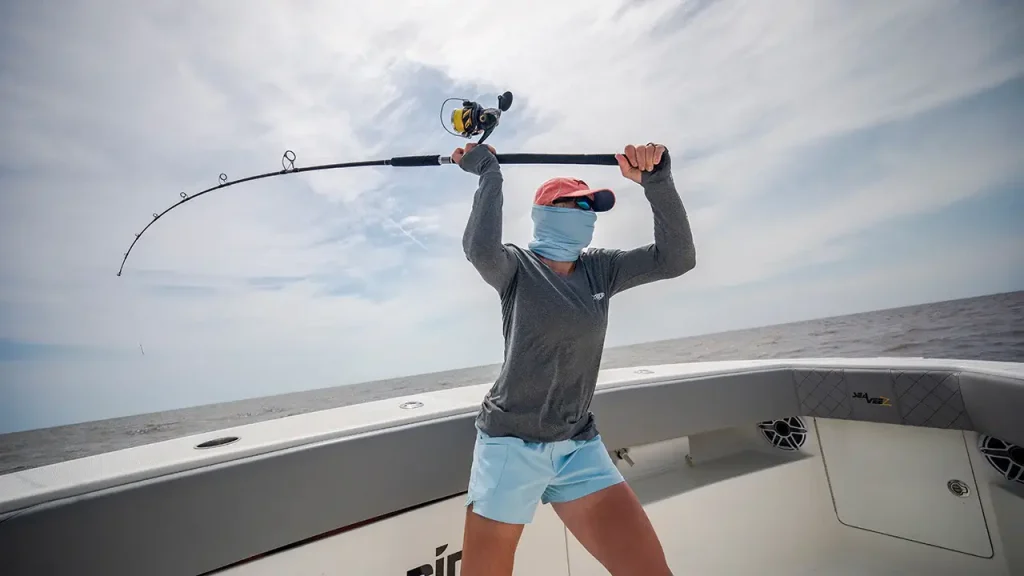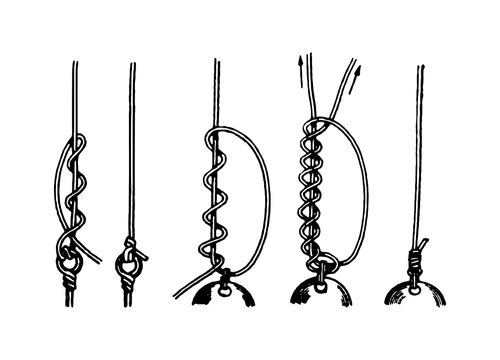Listen up, rookies! I’ve spent more hours on the water than I care to count, battling everything from feisty trout to monster marlin. I’ve felt the thrill of victory and the agony of defeat (oh, those days when the fish just won’t bite!), and I’ve learned a thing or two along the way.
Now, I’m not claiming to be the world’s greatest angler, but I’ve caught enough fish to fill a few freezers (and feed my family for a year). So, if you’re ready to ditch the couch and start reeling in your own dinner, I’m here to share some hard-won wisdom that’ll save you time, money, and frustration.
Let’s talk gear. I know it’s tempting to get sucked into the world of fancy rods, reels, and lures. But here’s the thing: you don’t need a boatload of expensive equipment to catch fish. In fact, when I first started fishing, I was using a beat-up rod my grandpa gave me, a rusty reel, and a handful of worms. And guess what? I still caught fish.
For most beginners, a basic spinning combo is the way to go. It’s easy to use, versatile, and won’t break the bank. You can find a decent combo for under $50. Look for a rod that’s 6-7 feet long with a medium action. This will give you enough power to handle a variety of fish without being too heavy or cumbersome.
As for the reel, a simple spinning reel with a smooth drag system will do the trick. Don’t worry too much about brands or fancy features. Just make sure it feels comfortable in your hand and operates smoothly.
Now for the line: go with monofilament. It’s affordable, easy to work with, and forgiving if you make a mistake (like me when I first started and got my line tangled more times than I can count). Start with 8-12 pound test – that’s strong enough for most freshwater fish you’ll encounter as a beginner.
Now that you have your rod and reel, you’ll need a few more items to complete your setup.
Lures are artificial baits designed to mimic the look and movement of prey fish. They come in all shapes, sizes, and colors. For beginners, I recommend starting with a few basic lures, such as spinners, crankbaits, and jigs. These are versatile and easy to use, and they’ll catch a wide variety of fish.
But let’s not forget the classics: live bait. Worms, minnows, and crickets are always a good option, especially when targeting smaller fish. Just remember, live bait requires a bit more care and handling than lures.
Pro Tip: Don’t overthink it. When I first started fishing, I’d spend hours agonizing over which lure or bait to use. But the truth is, fish aren’t that picky. If you present your bait in the right place, at the right time, you’re likely to get a bite.
Casting is the most fundamental skill in fishing, but it can also be the most intimidating for beginners. The key is to keep it simple.

The overhead cast is the most common casting technique and a good place to start for beginners. Here’s the breakdown:
That’s it! With a little practice, you’ll be casting like a pro in no time. I remember spending hours practicing my cast in my backyard. My neighbors probably thought I was crazy, but it paid off when I finally landed my first trout!
Pro Tip: Don’t try to muscle the cast. Use a smooth, controlled motion, and let the rod do the work. Think of it like a golf swing – it’s all about timing and technique.
The old saying, “10% of the fishermen catch 90% of the fish,” is true for a reason. Knowing where to find the fish is half the battle.

Think like a fish. Where would you hang out if you were a fish? Probably in areas with food, shelter, and oxygen. Look for areas with:
Don’t be afraid to ask for help! Local bait shop owners, fishing guides, and even fellow anglers can be a wealth of information. They can tell you where the fish are biting, what baits are working, and any special regulations you need to be aware of.
Fish behavior changes throughout the year, so it’s important to understand their seasonal patterns. In the spring, fish are often found in shallow water near spawning areas. In the summer, they may move to deeper, cooler water. And in the fall, they may start to move back towards their spawning areas.
Okay, you’ve cast your line into a promising spot. Now comes the exciting part: getting a fish to bite! But how do you know when you’ve got one on the line, and what do you do next?

Fish bites can range from subtle nibbles to aggressive tugs. Sometimes, it feels like your line is being gently plucked, other times it’s like a freight train hit it. Paying attention to these cues is key to hooking your catch:
Once you’re sure a fish has taken your bait, it’s time to set the hook. This means quickly pulling the rod tip up to drive the hook into the fish’s mouth. Don’t be afraid to give it a good yank, but don’t overdo it either. You don’t want to rip the hook out of the fish’s mouth.
Now the real fun begins! Once the fish is hooked, it’s going to fight back. Here’s how to handle it:
I once hooked into a massive king salmon that took me on a wild ride down the Kenai River. It was a 30-minute battle of wills, but I eventually emerged victorious, and the feeling of accomplishment was indescribable.
Once the fish is tired out, it’s time to bring it in. If it’s a smaller fish, you can simply lift it out of the water. But for larger fish, you’ll need to use a net.
To net a fish, hold the net in the water with the opening facing the fish. Gently lead the fish into the net, then lift it out of the water.
If you’re keeping the fish, dispatch it quickly and humanely. If you’re practicing catch-and-release, handle the fish with care. Wet your hands before touching the fish to avoid removing its protective slime coat. Support the fish’s body with both hands, and avoid squeezing it too tightly. Remove the hook gently, and release the fish back into the water as quickly as possible.
Now that you’ve mastered the basics, it’s time to take your fishing skills to the next level.

Knowing how to tie a few basic knots is essential for any angler. A good knot will keep your line attached to your hook or lure, even under pressure. Some essential knots for beginners include:
Practice these knots at home until you can tie them quickly and easily. A knot that fails on the water can cost you a big fish, so it’s worth taking the time to learn them properly.
Reed more on knot tying
The way you present your bait or lure can make a big difference in whether or not a fish will bite. Here are a few tips:
The more you understand fish behavior, the better angler you’ll become. Here are a few things to keep in mind:
Safety should always be your top priority when fishing. Here are a few tips to keep you safe on the water:
Remember, fishing should be fun! So relax, enjoy the scenery, and savor the experience.